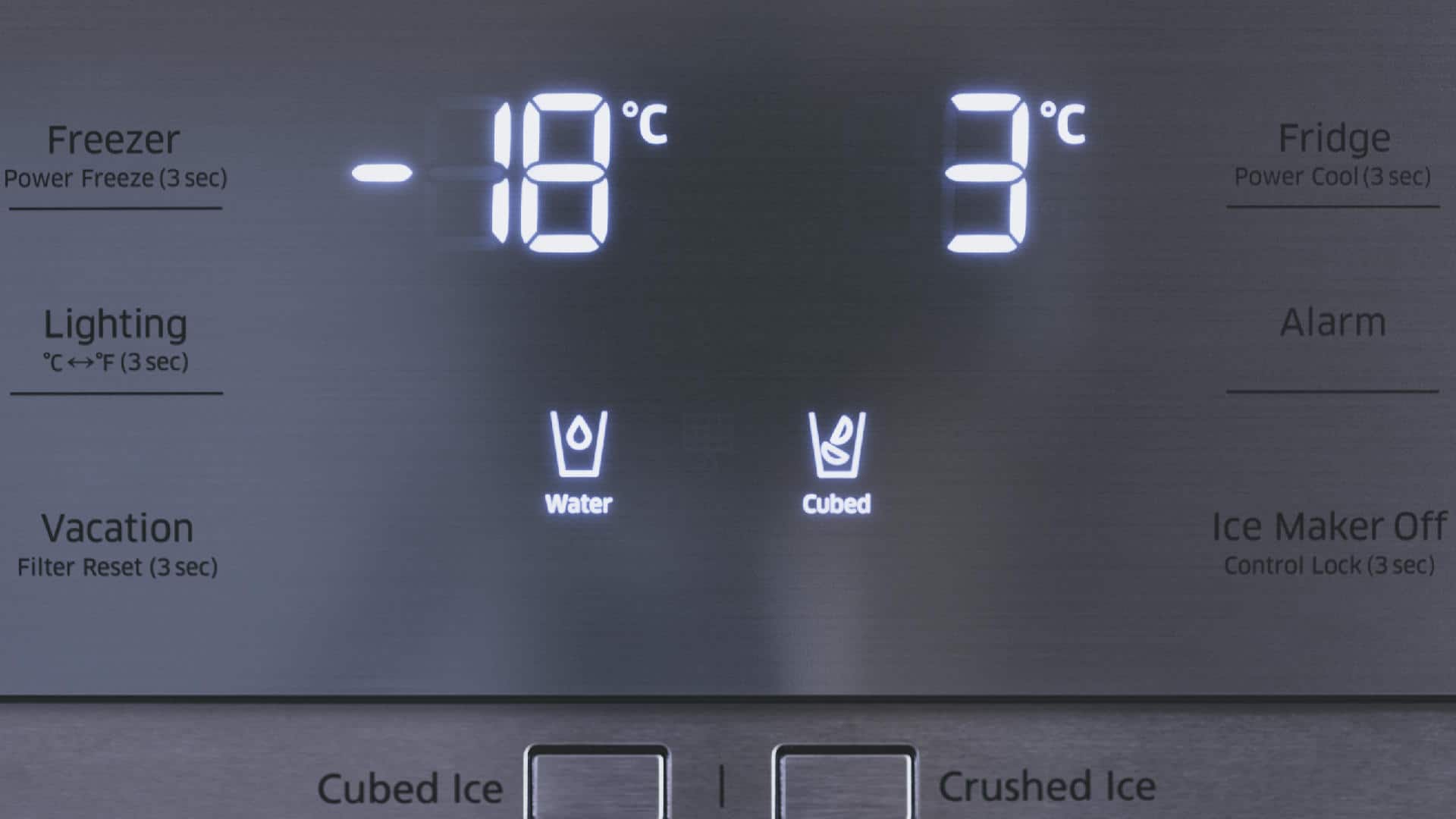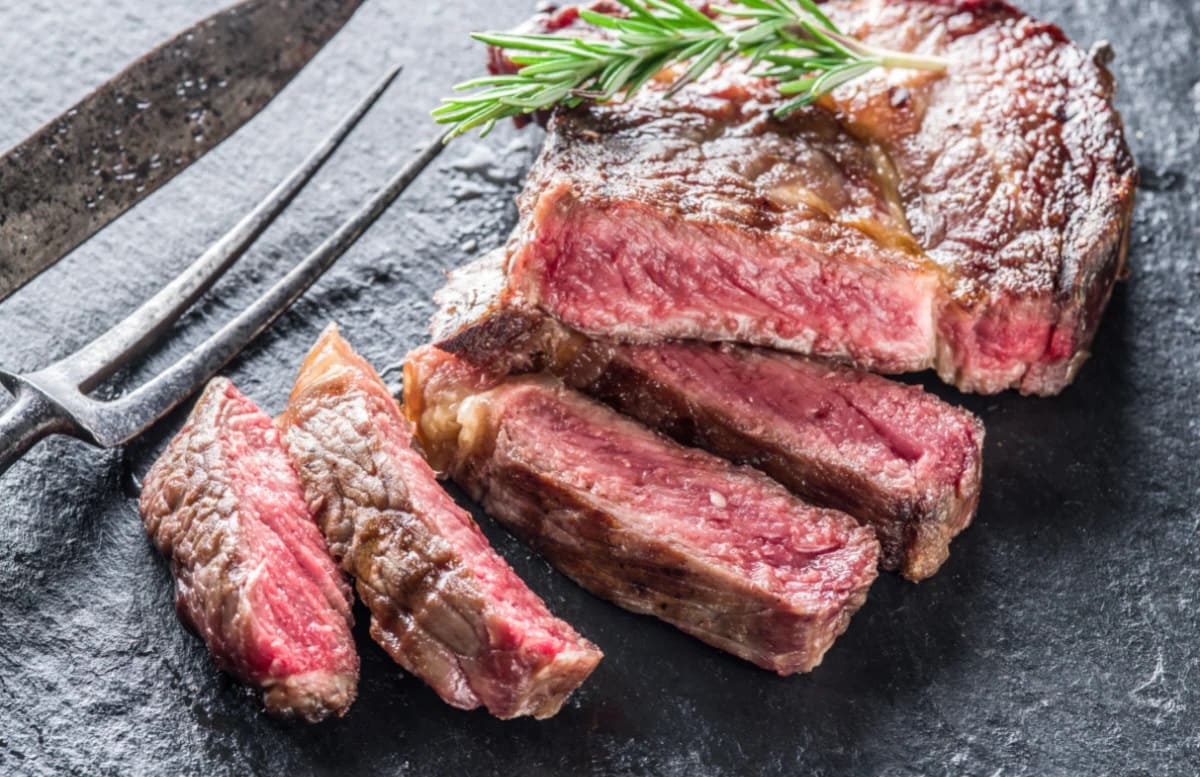Home>Culinary & Beverages>Optimal Temperature Settings For A Crock Pot


Culinary & Beverages
Optimal Temperature Settings For A Crock Pot
Published: February 21, 2024
Discover the ideal temperature settings for your crock pot to elevate your culinary creations. Find the perfect balance for delicious beverages and savory dishes. Unlock the potential of your slow cooker today!
(Many of the links in this article redirect to a specific reviewed product. Your purchase of these products through affiliate links helps to generate commission for Temperatures.com, at no extra cost. Learn more)
Table of Contents
Introduction
Setting the right temperature on a crock pot is crucial for achieving delicious and perfectly cooked meals. Whether you're preparing a hearty stew, tender pot roast, or flavorful soup, understanding the optimal temperature settings for your crock pot can make a significant difference in the outcome of your culinary creations.
The versatility of a crock pot lies in its ability to slowly and evenly cook a wide variety of dishes, allowing flavors to meld and ingredients to tenderize over time. By harnessing the gentle heat of a crock pot, you can transform tough cuts of meat into succulent masterpieces and infuse your dishes with rich, complex flavors.
In this article, we will delve into the factors that should be considered when setting the temperature on a crock pot, explore the recommended temperature settings for different types of dishes, and provide valuable tips for adjusting temperature settings to achieve the desired results. Whether you're a seasoned home cook or a novice in the kitchen, mastering the art of temperature control in your crock pot will elevate your culinary prowess and delight your taste buds with every meal.
Understanding the nuances of temperature settings in a crock pot is akin to unlocking the secret to culinary excellence. It empowers you to tailor the cooking process to the specific requirements of each dish, ensuring that every ingredient reaches its full potential and that the final result is nothing short of extraordinary.
So, let's embark on a journey through the realm of crock pot cooking temperatures, where precision meets creativity, and where every meal has the potential to be a masterpiece.
Factors to Consider When Setting the Temperature
When it comes to setting the temperature on your crock pot, several crucial factors should be taken into account to ensure that your culinary endeavors yield exceptional results. Understanding these factors will enable you to harness the full potential of your crock pot and elevate your cooking to new heights.
-
Recipe Requirements: The type of dish you are preparing plays a pivotal role in determining the optimal temperature setting for your crock pot. Certain recipes, such as soups and stews, benefit from low and slow cooking, allowing the flavors to develop and the ingredients to tenderize over an extended period. On the other hand, dishes that require a quicker cooking time, such as certain cuts of meat, may necessitate higher temperature settings to achieve the desired level of doneness.
-
Ingredient Sensitivity: Different ingredients react differently to heat, and their sensitivity should be considered when setting the temperature on your crock pot. For instance, delicate vegetables and seafood may require gentler heat to prevent overcooking, while tougher cuts of meat may benefit from prolonged exposure to low heat to achieve optimal tenderness.
-
Cooking Time: The duration for which your dish will be cooking is a crucial factor in determining the appropriate temperature setting. Longer cooking times often call for lower temperatures to ensure that the ingredients are cooked through evenly without becoming overdone. Conversely, shorter cooking times may necessitate higher temperatures to expedite the cooking process while still yielding delectable results.
-
Desired Texture and Flavor: Consider the desired texture and flavor profile of your dish when setting the temperature on your crock pot. Low temperatures are ideal for breaking down collagen in meats, resulting in succulent and tender bites, while higher temperatures can caramelize sugars and intensify flavors in certain dishes.
-
Crock Pot Size and Model: The size and model of your crock pot can influence its heating capabilities. Larger crock pots may require higher temperatures to effectively cook the contents, while smaller ones may distribute heat more efficiently, allowing for lower temperature settings.
By taking these factors into consideration, you can make informed decisions when setting the temperature on your crock pot, ensuring that each dish is cooked to perfection and brimming with exquisite flavors and textures.
Recommended Temperature Settings for Different Types of Dishes
When it comes to utilizing a crock pot for various culinary creations, understanding the recommended temperature settings for different types of dishes is essential for achieving optimal results. The versatility of a crock pot allows for a wide range of temperature options, each catering to specific cooking requirements and ensuring that every dish is imbued with exceptional flavors and textures.
-
Stews and Soups: For hearty stews and soul-warming soups, low temperature settings, typically around 190°F to 200°F (88°C to 93°C), are ideal. This gentle heat allows the ingredients to slowly meld together, resulting in rich, complex flavors and tender, succulent meats.
-
Roasts and Braises: When preparing roasts and braised dishes, a moderate temperature setting of approximately 210°F to 250°F (99°C to 121°C) is recommended. This temperature range facilitates the gradual breakdown of tough cuts of meat, resulting in melt-in-your-mouth tenderness while infusing the dish with deep, savory flavors.
-
Poultry and Seafood: Poultry and seafood dishes benefit from slightly higher temperature settings, typically ranging from 250°F to 300°F (121°C to 149°C). This allows for thorough cooking while preserving the delicate textures and flavors of the ingredients.
-
Vegetarian Dishes: Vegetarian and vegetable-centric dishes thrive at lower temperature settings, typically around 180°F to 200°F (82°C to 93°C). This gentle heat ensures that the vegetables retain their vibrant colors, nutrients, and natural flavors without becoming overcooked.
-
Dips and Sauces: For dips, sauces, and dips, a low to moderate temperature setting, around 180°F to 220°F (82°C to 104°C), is recommended. This allows the flavors to meld together while preventing scorching or over-reduction.
-
Desserts and Sweet Treats: When crafting delectable desserts and sweet treats in a crock pot, a low temperature setting, typically around 180°F to 200°F (82°C to 93°C), is ideal. This gentle heat ensures that the desserts cook evenly and develop luscious flavors without the risk of burning.
By adhering to these recommended temperature settings for different types of dishes, you can harness the full potential of your crock pot and elevate your culinary repertoire with an array of delectable creations. Whether you're simmering a comforting stew, braising a succulent roast, or crafting a decadent dessert, the precise temperature settings will empower you to achieve culinary excellence with every dish.
Tips for Adjusting Temperature Settings for Desired Results
Achieving the desired results when cooking with a crock pot hinges not only on selecting the appropriate temperature setting but also on making nuanced adjustments throughout the cooking process. These tips will empower you to fine-tune the temperature settings to ensure that every dish emerges from the crock pot with exceptional flavors, textures, and aromas.
1. Preheat for Precision
Before adding your ingredients to the crock pot, consider preheating it for approximately 20 minutes on the desired temperature setting. This preheating step helps establish a consistent and stable cooking environment, allowing for more precise control over the cooking process from the outset.
2. Monitor Moisture Levels
For dishes that require longer cooking times, such as stews and braises, periodically check the moisture levels throughout the cooking process. If the dish appears to be drying out, consider reducing the temperature slightly and adding a small amount of liquid to maintain the desired level of moisture.
3. Adjust for Ingredient Variations
Different cuts of meat, types of vegetables, and other ingredients may respond differently to heat. When preparing a dish with a variety of ingredients, consider adjusting the temperature settings based on the specific characteristics and cooking requirements of each component. This tailored approach ensures that every element of the dish is cooked to perfection.
4. Experiment with High-Low Combinations
Certain recipes benefit from starting with a higher temperature setting to initiate the cooking process and then transitioning to a lower setting to allow for gentle simmering and flavor development. Experimenting with high-low temperature combinations can yield exceptional results, particularly for dishes that require complex layering of flavors and textures.
5. Embrace the Warm Setting
Once your dish has reached the desired level of doneness, utilizing the warm setting on the crock pot can help maintain the optimal serving temperature without overcooking the ingredients. This feature is particularly useful when preparing dishes in advance or when serving meals over an extended period.
Read more: Optimal Freezer Temperature: How To Set And Maintain The Perfect Temperature For Your Freezer
6. Consider External Factors
External factors, such as ambient temperature and altitude, can impact the cooking process in a crock pot. In colder environments, slightly higher temperature settings may be necessary to compensate for heat loss, while at higher altitudes, adjustments to cooking times and temperature settings may be required to achieve the desired results.
By implementing these tips and techniques for adjusting temperature settings, you can harness the full potential of your crock pot and elevate your culinary creations to new heights. The art of temperature control in a crock pot is a dynamic and rewarding endeavor, allowing you to craft a diverse array of dishes with precision and finesse.
Conclusion
Mastering the art of setting the optimal temperature on a crock pot is a transformative journey that empowers home cooks to elevate their culinary prowess and create exceptional dishes with precision and finesse. By considering factors such as recipe requirements, ingredient sensitivity, cooking time, desired texture and flavor, and the size and model of the crock pot, individuals can make informed decisions when setting the temperature, ensuring that each dish is cooked to perfection and brimming with exquisite flavors and textures.
Understanding the recommended temperature settings for different types of dishes is essential for harnessing the full potential of a crock pot. From hearty stews and succulent roasts to delicate seafood and delectable desserts, each culinary creation benefits from precise temperature control, allowing flavors to develop, ingredients to tenderize, and textures to reach sublime levels of perfection. By adhering to these recommended temperature settings, home cooks can embark on a culinary adventure, crafting an array of delectable creations that delight the senses and nourish the soul.
Furthermore, the ability to adjust temperature settings throughout the cooking process empowers individuals to fine-tune the culinary alchemy unfolding within the crock pot. From preheating for precision and monitoring moisture levels to experimenting with high-low combinations and embracing the warm setting, these tips and techniques enable home cooks to orchestrate a symphony of flavors, textures, and aromas with unparalleled finesse.
In conclusion, the art of temperature control in a crock pot is a dynamic and rewarding endeavor that transcends mere cooking; it is a journey of creativity, precision, and culinary excellence. With each dish that emerges from the gentle heat of a crock pot, a story unfolds—a story of dedication, ingenuity, and the relentless pursuit of gastronomic perfection. As home cooks continue to hone their skills in temperature control, they unlock the full potential of their crock pot, transforming humble ingredients into extraordinary culinary masterpieces that captivate the palate and nourish the soul.













